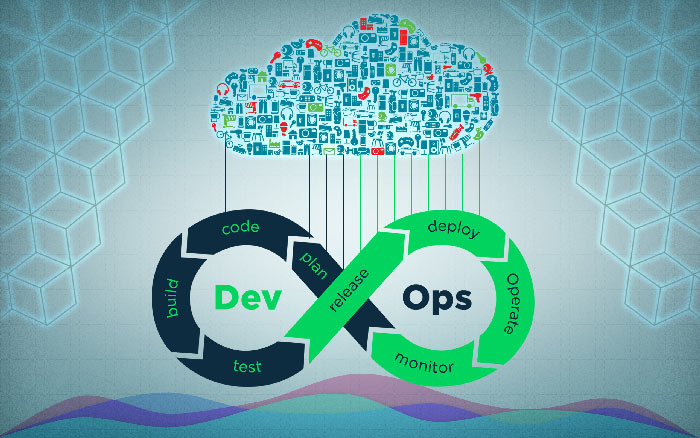
Every Succesful Project is Considered Succesfull only when there is a rigorous project Implementation activity consisting of careful execution in every stage. Both the Project Management and Implementation Methodologies should be strategically identified & Accordingly implemented based on the context of the solution, scope & its complexity.
Nimaisoft with its core expert team adopts project methodology clearly based on project type and client requirements and has extensive exposure in diverse project environments thereby has successfully utilized different methodologies to ensure clients' requirement are succesfully delivered blended with potential solutions.
Project management methodologies are the various ways in which projects are
initiated, planned, and executed unto completion. There are different project
management methodologies to benefit different projects. Selecting the most
suitable project management methodology could be a tricky task.
Each project management methodology carries its own strengths and weaknesses.
Therefore, there is no good or bad methodology, and what you should follow is
the most suitable one for your project management requirements.
Based on project types, time and budget constraints, and your needs, our project
teams can use one of the following proven software development methodologies for
your custom web application development and (or) mobile
Agile Development Model provides a structured framework aimed to deliver the high quality software solutions to our clients. We adapted the Agile Methodology and absorbed the best approach to get maximum performance and highest quality for projects.
Project management methodologies are the various ways in which projects are initiated, planned, and executed unto completion. There are different project management methodologies to benefit different projects. Selecting the most suitable project management methodology could be a tricky task.
Agile Working Processes - We believe that the interactive and incremental development, where requirements and solutions evolve through collaboration between the team and the client, adds agility in the project ensuring evolution of the requirements to meet all business trends of the software solution. Nimaisoft has incorporated SCRUM as software development methodology to implement iterative project management.
Our Agile Approach
| Story Based | Sprint Planning | Test Driven | Tools |
|---|---|---|---|
| Our story based approach makes illustrating most complex requirements simple. | Our focus is to plan the sprints transparently with all the details. | Test Driven approach ensures requirements traceability and quality delivered. | We use the best tools in the industry to provide seamless delivery process. |
There are many agile methods available, of which we find that Extreme Programming and Scrum are the two methods that are best suited for us to provide you the maximum benefits. Any one of these methods alone has inherent drawbacks. So we have adopted a hybrid method by blending the benefits of both.
Among the different agile practices, we have adopted Test Driven Development and Continuous Integration. Again, any one of these practices alone limits the flexibility in some solution development situations. So we have gone in for the concoction that is difficult for our competitors to beat.
This is a software development methodology which is intended to improve software quality
and responsiveness to changing customer requirements. As a type of agile software
development, it advocates frequent "releases" in short development cycles, which is
intended to improve productivity and introduce checkpoints at which new customer
requirements can be adopted. Extreme Programming (XP) marks a departure from the
conventional programming approach. It stresses importance to individuals and
interactions over processes and tools, working software over documentation, customer
collaboration over contract negotiation, and responding to change over following a plan.
Advantages of XP model is:
Scrum is the other agile software development method that we use in combination with Extreme Programming for our hybrid agile software development method. It is an iterative incremental process with clear guidelines, practices to be followed, and predefined roles. The main roles in Scrum are:
The method has incremental completion periods called sprints, the periodicity of which is decided by the team. Each sprint creates an increment of usable software. The Product Owner tells the team of the items in the product backlog during the sprint planning meeting. The team analyzes and decides how much of this backlog can be committed for the next sprint. Once the sprint is completed, we get a usable increment of software which is demonstrated to the client.
We find Scrum a beneficial method for you because of its empirical approach – accepting that the entire solution you need cannot be fully and accurately defined at the start of the project itself. Instead, the focus is on maximizing our team's ability to deliver fast and respond quickly to your changing requirements. As the project completes, you get exactly you want now, instead of what you thought you wanted at the start of the project.
Agile Practices
Test Driven Development, also known as TDD, uses short development iterations based of pre-written test cases. The test cases define desired improvements or new functions. Each iteration results in code needed to pass that iteration's tests. Preparing tests before coding aids rapid feedback changes. A typical development cycle of TDD involves:
Continuous Integration, or CI, is a software development practice in which usually each person in the team integrates at least daily, leading to multiple integrations per day. Verification of each integration is done by an automated build (including test) to detect and rectify integration errors as quickly as possible.
Continuous integration advantages:
DevOps is a culture that puts development and IT Operations in the same boat. This method improves IT service delivery with both teams working together. For continuous development, testing, feedback and Deployments.
We offer proven tools, flows, environments and expertise for small and medium enterprises to quickly spin up a DevOps environment for your use. We offer capabilities for enterprises to develop, build, test, deploy and maintain software across a variety of Cloud environments.
Our software development model ensures that the customer is involved at all stages of development and transparency is maintained. By keeping the customer involved we ensure a satisfactory product in all phases of software development. This development model places the customer at the helm of the process thus raising the confidence and returns from the product delivered.
Our QMS integrates the various internal processes within the organization and intends to provide a process approach for project execution. The QMS incorporates quality planning, provides a framework for managing the activities that enable the company to create actions and services which consistently satisfy the customer and regulatory requirements, and is a tool for achieving enhanced customer satisfaction. One of the goals of the ISO 9000 Quality Management System standard is to bring control and consistency to your processes. The standard asks you to identify your key processes, and manage and improve those processes. Documentation is one of the ways you manage and control your processes. By writing procedures and work instructions you will make sure that everyone is performing the process the same way. Quality management and testing require a nuanced understanding of our clients' specific needs. Our approach combines proven domain expertise with the deep insight through leadership has helped us shape the software quality industry down these years.
Quality Management in the development lifecycle – Nimaisoft has always taken an uncompromising position in respect to quality. Our Quality Management System (QMS) has a concrete set of engineering & managerial activites that ensures the delivery of high quality software through the entire workflow. The experiences from the project are ploughed back to refine the process. Continuous improvements help us milestones with no-compromise on quality.
| QMS Objectives | Key Processes |
|---|---|
|
|
With Nimaisoft, these entire processes, refined over several years of project execution, ensure customer satisfaction as their flexibility allows adjustments to meet expectations.
We collaborate closely with our clients to identify the best fit for the project. We specialize in reducing costs for our customers and improving productivity, reliability, quality, speed and agility.